I’ve known Tim O’Donnell for well over a decade, and I’d never heard this particular tinge of panic permeating his voice until this moment in western North Carolina. Tim had just started fishing a tiny section of the Pigeon River’s west fork, a hole about the size of a five-gallon Harbor Freight bucket, when his indicator suddenly disappeared from the water’s surface and his 3wt Thomas and Thomas rod nearly bent in half.
What I assumed to be the Appalachian version of the Loch Ness Monster had swallowed Tim’s mop fly and was now changing direction more times than Trump on tariffs, trying every possible trick and contortion to release the tiny hook from its massive maw.
As Josh Seabolt, our guide for the day, shouted directions to keep the rod bent or to give the fish more line, Tim responded with a rapid succession of “I’m doing it!” or “I’m trying!” reaching into the upper octaves of his usually relaxed Midwestern timbre. After what seemed like an eternity to Tim, he managed to muscle his prize into Josh’s waiting net, revealing a 22-inch wild brown trout. This was the fish Tim would tell his nonexistent grandkids about someday.
Tim’s seriously sizable salmonid capped one of the most productive days of fishing either one of us had ever had. The crystal-clear river had just recently been stocked, and we’d been pulling out all manner of rainbows and brookies since our first cast that morning. Even our amazing and energetic guide Josh – imagine a jovial Tasmanian Devil hopped up on an endless supply of sugar and Mountain Dew – said it was one of the best days he’d ever had on the Pigeon.
It was hard to believe that less than six months earlier, Hurricane Helene ripped through the area, causing widespread devastation in its wake. Most of the Pigeon I saw was absolutely pristine, but further downstream, Helene’s scars remained in spots. Bridges gone. PVC pipe bent around battered ash trees. Shredded tarps tangled in branches. Splintered boards and waterlogged chunks of drywall scattered along the riverbanks. The people living in these sleepy hamlets have their own scars as well.
More Like This
“No one from the outside understands the devastation,” said Visit Haywood’s Corrina Ruffieux, as we chatted over beers at a local tavern the night before. “The storm hit around 3 am. We could hear trees falling so close all around our house, but we couldn’t leave. Where would we go? It wasn’t long before the power and water went out. Cell towers fell and the internet went dead. We had no way to contact anyone. That went on for days.”
The river was up to 7 feet higher than what’s typically considered a catastrophic flood. Roads had been overrun by water. Bridges washed away. Interstate 40 was gone in places, making it more difficult to obtain outside assistance in the ensuing days and weeks.
“For two weeks after the storm, we had no communications, no groceries, and no gas,” said Ruffieux. “All we had was each other.”
After suffering severe damages during Helene, the Cataloochee Valley just inside Great Smoky Mountains National Park finally reopened to visitors on the third day of our visit. Eavesdropping on a conversation between two locals, we heard how amazing the fishing was pre-hurricane, so Tim and I were determined to check it out.
Broaching the subject with the jovial Maggie Valley Fly Shop owner Shannon Young, we discovered that acquiring the information we sought required a level of interrogation finesse neither Tim nor I possessed. After more than 30 minutes of chatting about the amazing fishing surrounding us, Young was happy to sell us the 7X tippet and microscopic pheasant tails we needed. But when it came to exactly where we should cast them in Cataloochee Valley, he quickly became more tightlipped than an Italian grandma when asked for her sauce recipe.

“Just go anywhere,” Young said. “You’ll find some fish.”
“Is there a specific place you’d recommend?” I asked.
“No, just anywhere.”
“There’s gotta be …”
“Just anywhere.”
It turns out the best spots in Cataloochee Valley are for locals only. The best fishing holes are closely guarded secrets. Giving out a prime fishing spot to an outsider could be considered a crime akin to murder or putting ketchup on a hot dog.
The detour signs were still up when Tim and I turned onto the road to the park the next day. After every turn, we expected to find huge orange barricades blocking our way and forcing us to turn around, but we managed to make it into the park unimpeded. My guess was the person responsible for taking down the signs was a fisherman and wanted to have the Cataloochee to himself for at least one more day.
Well, it worked. We expected the valley to be filled with anxious anglers, but with the exception of one solitary fly fisher casting on the river just after the entrance, we were alone. We drove a mile or two further, crossed over a small one-lane bridge and decided to try our luck there.
Cataloochee Creek winds a narrow path through a forest of red maple and white oak. During our early April visit, the trees hadn’t yet budded, so sunlight streamed through the empty canopy. We scanned the area for signs of Helene, but the park service had done an amazing job with clean up and repairs.

As it turned out, the worst thing I saw all day was me. Watching a buddy reel in more or bigger fish than you is a character test; your reaction is a mirror on who you are. And as Tim hauled in his second wild ‘bow of the day to my zero, a bitter, jealous man was looking back at me in that metaphorical mirror. I silently accused one of my best friends in the world of the worst betrayal possible.
He caught the big brown yesterday, and he’s taking all the fish today?
For the briefest of moments, I pondered the potential fallout of just leaving Tim wading in the river and driving off, but the thought of him catching even more fish while waiting for his Uber further sparked my jealousy. Thankfully, a wild brookie saved me from my moral anguish by biting my hook. Hooking that lone, wild fish was just as, if not more, exciting than the dozen or more that I’d caught the day before. It wasn’t much bigger than the tiny fly it swallowed, but it was enough for me to forgive my friend’s imaginary trespasses.
Tim and I fished for an hour or two more, but didn’t have any more luck. So after some beer and burritos, we headed back to our Maggie Valley condo rental. Haywood County has plenty of lodging choices, from campgrounds to family-owned motels to Airbnb options. Even though it wasn’t yet high season, most of the spots we passed seemed near capacity. Seeing the area rebound so quickly after Helene was heartening.
The tourism industry is the biggest economic driver in the county “by far,” Ruffieux said, adding that a lot of other industries, including local farmers, depend on tourism as well.
Things aren’t totally back to normal, said Powell Wheeler, a NC Wildlife Resource Commission sport fish biologist. Helene extracted a toll on the community that will be felt for years. Some businesses closed or have reduced hours. Houses that were filled with a foot of mud and sewage are being torn down, and many won’t be rebuilt. Even the course of the Pigeon River changed in spots.

“We may look a little different,” Ruffieux said, “but we’re still open for business. We want people to come. We need their dollars.”
Fishing is a big part of that tourism draw. After not being able to make or receive calls for nearly a week, one of the first people to reach out to Wheeler after cell service was restored asked him if the rivers would be restocked on schedule that month. (They weren’t.)
The water quality during the flooding “was god awful … diesel fuel, sewage, dirt, and silt contaminated the Pigeon.” But the river has rebounded since. Wild trout numbers dropped slightly in the aftermath of Helene, Wheeler said, “but with a few good spawns, should be completely back to normal in 2-5 years. Millions of years of evolution have made them very resilient.”
One of the state’s two hatcheries was severely damaged during Helene, but is expected to be back online by the end of 2025. The other hatchery is managing to make up the shortfall, with stocking numbers about 90 percent pre-hurricane.
“We’re doing the best we can because we know how important trout is to the community,” Wheeler said.
On our final day in Haywood County, Tim and I returned to the west fork of the Pigeon River, where we met Ben Colonnese of Fixed Line Appalachia. Ben volunteered to take us out tenkara fishing, basically fly fishing without the reel. Tim took to it like a duck to water, shooting his nymphs into tight openings in the underbrush; I, on the other hand, was a bit more hard-headed. If Ben is reading this, I apologize, but I just didn’t care for that style of fishing. He was a great guide, showing us the ins and outs of tenkara and pointing out potential pockets of fish, But after 20 minutes, I was tempted to grab my Orvis Encounter rod and reel to fish how god and John Gierach intended. This section of the Pigeon had its own scars, namely 40-foot disintegrating cliffs eroded by the flood, leaving roots and drainage pipes exposed. Yet despite it all, those clay-caked cliffs remained standing, somewhat symbolic of the resiliency of both the landscape and the people who live there.
“Soon after the storm subsided, we started checking on our neighbors,” Ruffieux said. “Just knocking on people’s doors, making sure they were OK and if they needed anything. Ironically, after the flood, access to clean water was difficult. We were filling 5-gallon buckets from tanker trucks and delivering them to elderly residents who couldn’t leave their house.

“Whatever our neighbors needed, we were there for them. That’s how I know we’re going to get through this stronger and better than ever as a community.”
After fishing with Ben for a few hours, Tim headed north back to Indianapolis, while I stuck around to potentially do one more day of fishing. However Mother Nature had other ideas. The rain started soon after we got off the river and only intensified as day turned into night, becoming a full-fledged storm. I didn’t have to look outside to know the rivers and creeks were blown out, but heading out for coffee that morning, I was shocked by just how much they’d risen. I wondered if people who suffered through Helene felt PTSD when seeing the river that high again. I wasn’t even here then, and I could feel my anxiety rise with the river levels.
After talking to a seemingly endless stream of folks throughout my visit, I was impressed by both their hard work and spirit. The fishing brought me to Haywood County, but it’s the people who will bring me back.
IF YOU GO
Choosing a Lodge
There’s plenty of lodging options in Haywood County, but none (to my knowledge) aimed only at fly fishers. We stayed in a three-bedroom condo at Maggie Valley Country Club which is a great option for groups.
Getting There
If you want to fly to Haywood County, Asheville is the closest regional airport and Charlotte the closest international airport. Charlotte’s serviced by most of the major carriers. Plan to encounter traffic on your way; many of the major roads are still being repaired after Helene.
When to Go
Trout season runs most of the year. Stocking occurs in the Pigeon River and Jonathan and Richland Creeks March through June, with the west fork of the Pigeon getting additional trout reinforcements in October and November.

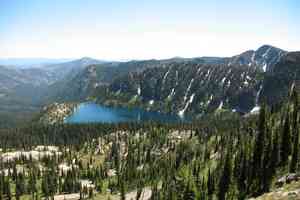


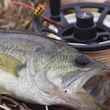



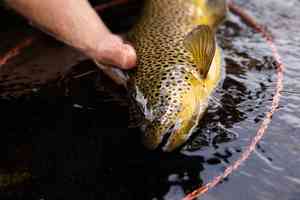


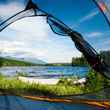

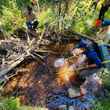



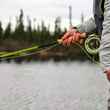

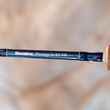
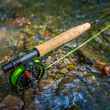
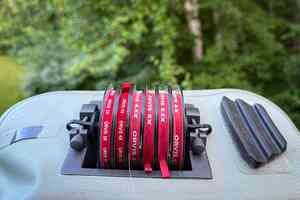
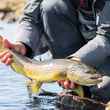
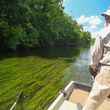

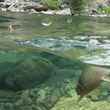
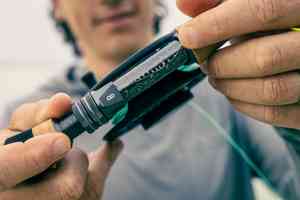

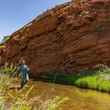
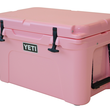
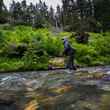
Comments
Justin replied on Permalink
Great article but these two lines were totally unnecessary ... remember the golden rule. "If Ben is reading this, I apologize, but I just didn’t care for that style of fishing. After 20 minutes, I was tempted to grab my Orvis Encounter rod and reel to fish how god and John Gierach intended."
Justin replied on Permalink
Why did you not publish my comment ... What's up with the hating on fixed line fishing.
Pages